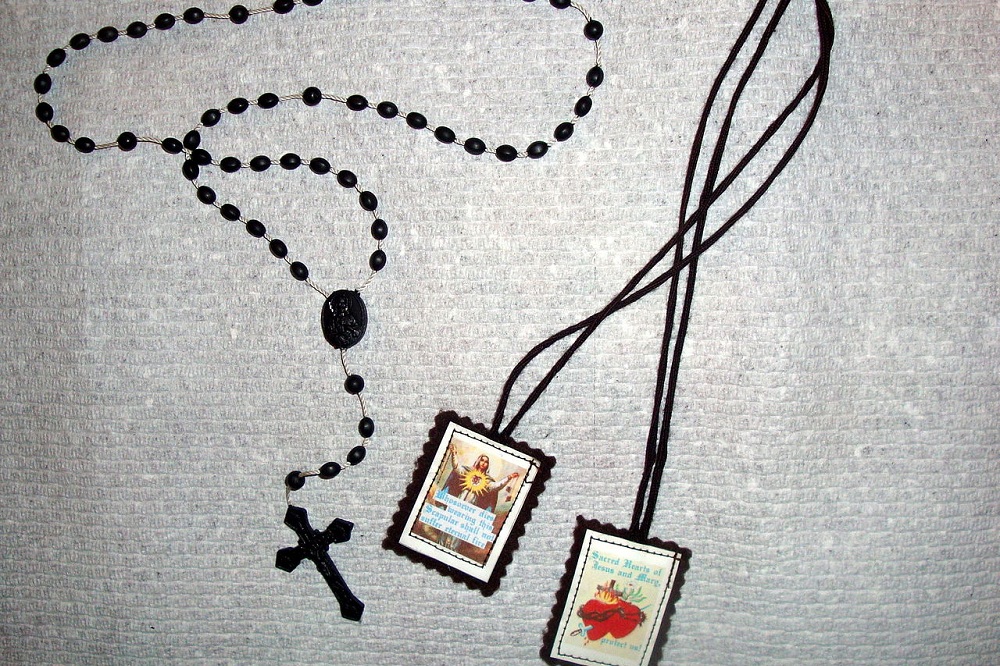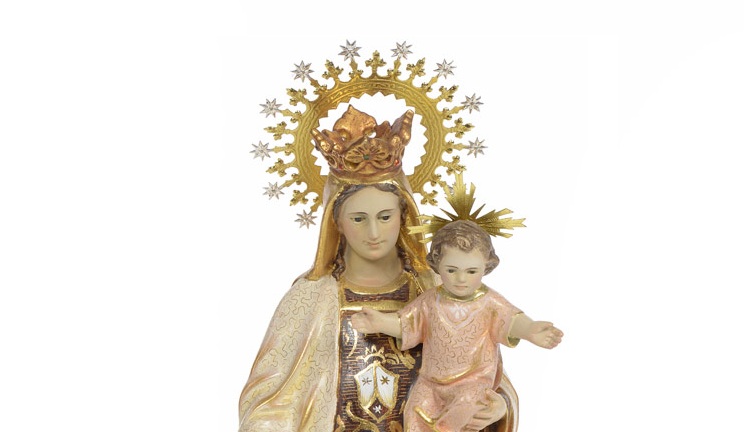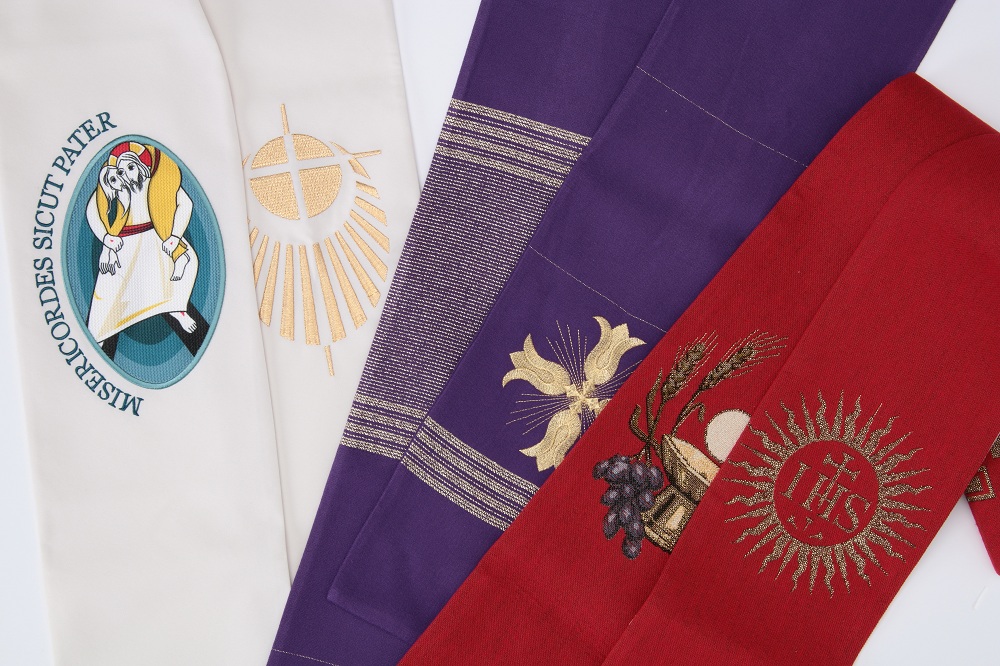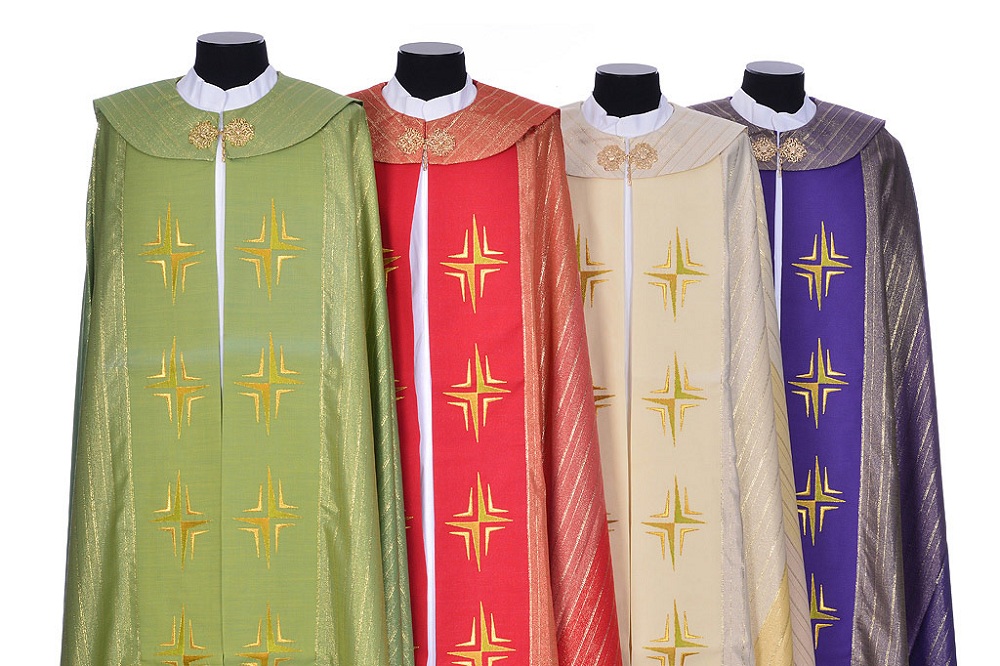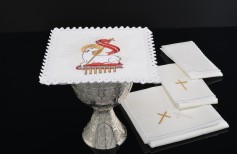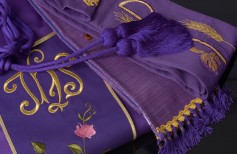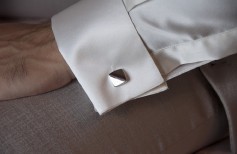The scapular has evolved throughout time, from being a work garment for monks to becoming a devotional object used also by lay people. What is its meaning? And most of all, how can we wear it without falling into error?
At the beginning, the scapular was a strip of cloth worn thanks to an opening for the head. That way, the two pieces of cloth were hanging down on the chest and on the back. It was used by many religious orders, such as the Benedictines, the Dominicans and the Carmelites. It covered shoulders and stomach and was used as a work garment in order to preserve the tunic underneath. Some orders adopted a hood as well, integral part of the scapular. With time, the scapular became longer and longer, turning into a strip of cloth until the feet.
The Carmelite order
Besides the original practical scope of protection, the scapular is also a devotional object. In particular, the Carmelite order made it a visible sign of their Marian devotion. The members of the Order wear the scapular during the processions dedicated to the Virgin Mary of Monte Carmelo, and during the pilgrimage from one altar to the other on Holy Thursday.

The order of the Barefoot Carmelites
The Barefoot Carmelites (or Discalced Carmelites) are nuns whose life is devoted to God by solemn vows.
A legend says that in 1251, when the Order of Carmelo (which moved from the Holy Land to Europe) was not recognized and suffered from persecutions from any side, the Prior general Saint Simon Stock asked the Virgin Mary for help. In order to do that, he dedicated the hymn Flos Carmeli to her. The Virgin listened to his heartfelt and poetic plea, and showed herself to him bringing him a scapular as a sign of love and friendship for him and his Order. The Virgin Mary herself stated that those who died wearing the scapular would never know the pain of hell, because that was a sign of salvation, protection and support. A symbol of peace and alliance between men and Heaven.
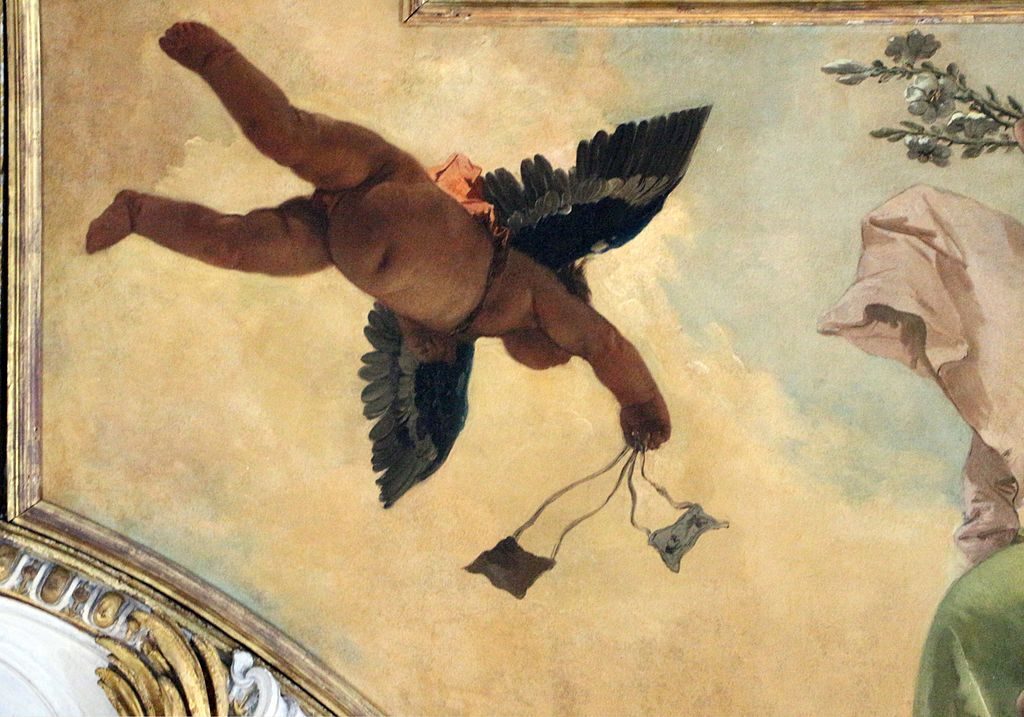
In his Bulla Sabatina (1322), John XXII stated that the use of the scapular guaranteed the shortening of the pains in the Purgatory. Since the Bulla Sabatina, the devotion towards the scapular spread widely.
In 1908, the Sacred Congregation of Indulgences confirmed the benefits guaranteed to those who wore this devotional sign.
A bulla dated February 11 1950 by Pius XII recognized the value of the scapular among Marian devotions, inviting everyone, whether religious or lay, to wear it.
In 2001, John Paul II said that he had been wearing the Scapular of the Carmine upon his heart for a long time.
The scapular is known today also as ‘abitino’ (small dress). A reduced version was created for lay faithful. It is made of two brown squares of cloth kept together by cords. The image of Our Lady of Carmelo is on one side, the Heart of Jesus on the other side. It is a miniature of the Carmelite robe, and is usually made of canvas. Those who wear the scapular enters the Carmelite family and consecrate themselves to Mary. The scapular is then a visible sign of the alliance with Mary.
Pope Pius XII established that the scapular could be replaced with a medal. This medal preserves the meaning and value of the classical scapular, as long as the first time it is worn it receives the same imposition the scapular itself received. Such imposition must be given by a priest and accompanied by a special prayer.
Today we can find jewel-scapulars in stores, made of wood and metal, often silver, decorated with rhinestones or made of fabric. They can be worn as jewels, and that makes them even more accessible to all those faithful who wish to express their devotion to Mary and their will to embrace the spiritual and life principles of the Order of Carmelo:
- Consider God at the first place in our life and always execute His will;
- Listen to the Word of God in the Bible and put it into practice every day;
- Look for the communion with God through the prayer;
- Show mercy and participation to the sufferings of our neighbor and help those in need as much as possible;
- Regularly receive the sacraments.
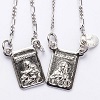
About the possibility to wear a scapular-shaped jewel, some time ago we published an article about religious jewels, and on how important it is to know their meaning well before wearing them. We cannot wear a religious jewel just for fashion, although many fashion designers carelessly propose crucifixes, rosaries, medals dedicated to Mary or the Saints, as if they were simple glamour ornaments. When we wear religious jewels, it is very important that we think of the meaning we give them, which makes the difference (often very thin) between sacred and profane.
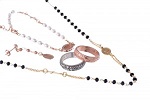
Religious jewels: fashion or devotion?
We are talking here about religious jewels, about how they are often impoverished of their deepest and truest spiritual value
In particular, wearing a jewel-scapular can be a gesture of great devotion and a support in everyday life for our own spiritual salvation. The scapular is not a pass for Heaven though! It is not enough to wear it to be granted salvation, but, as it is in such cases, it is our mental attitude that counts, the way we approach things. The faith of those wearing it determine its efficiency, the way we carry out our everyday life, our morality, our mercy. Those who expect salvation must behave in a worthy way.

